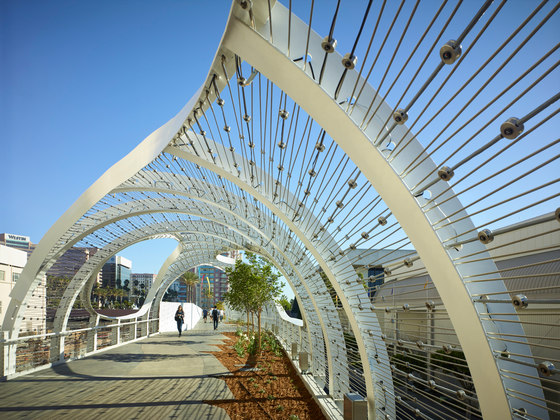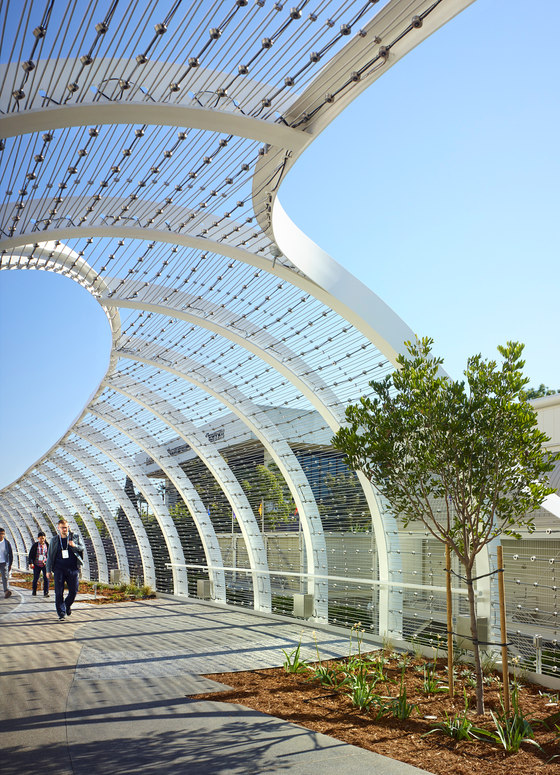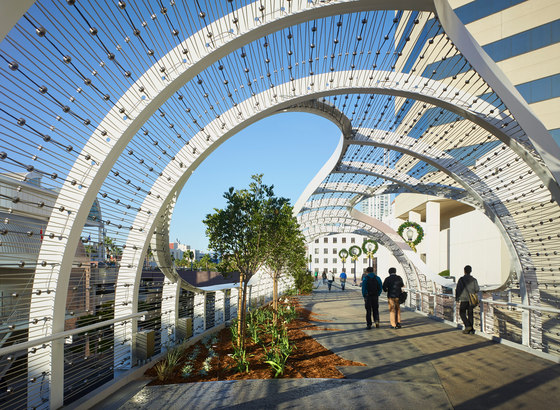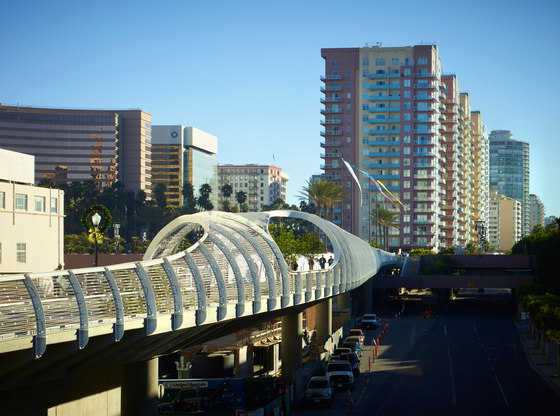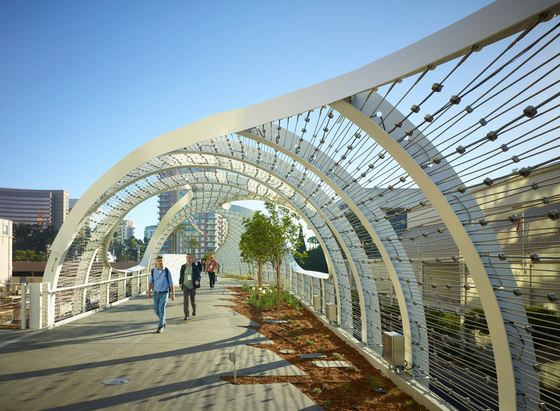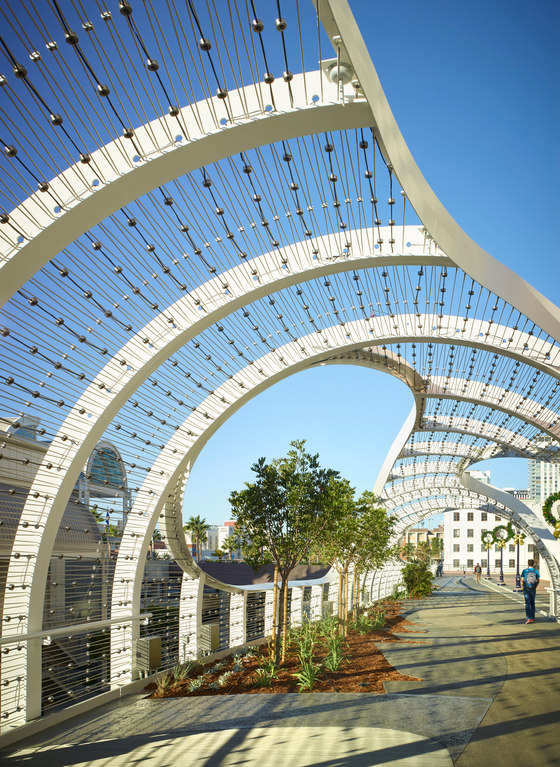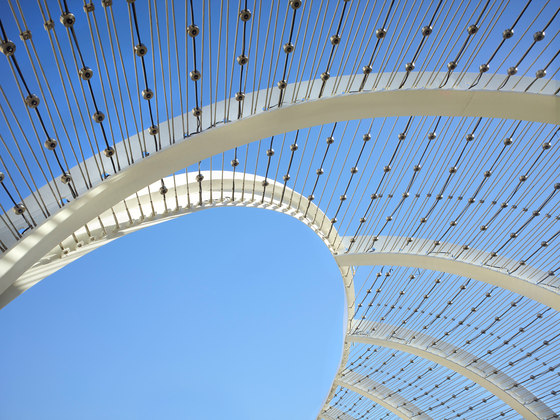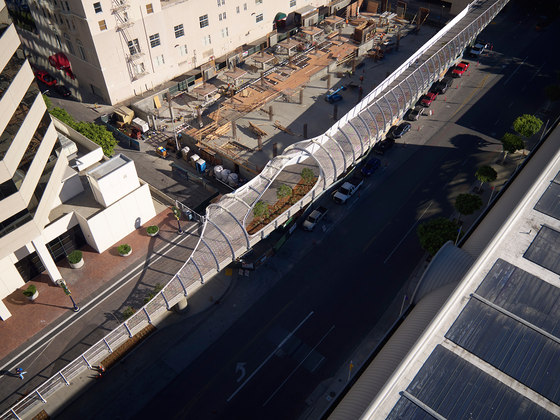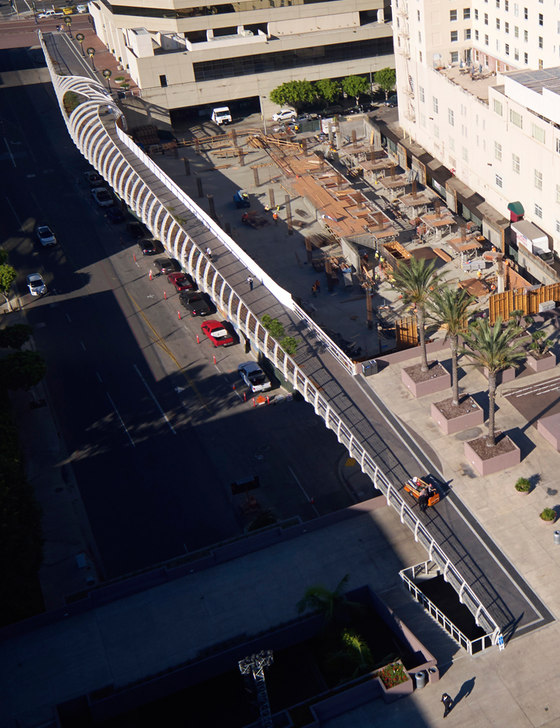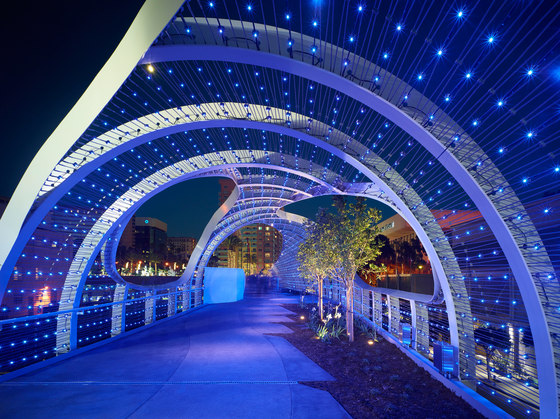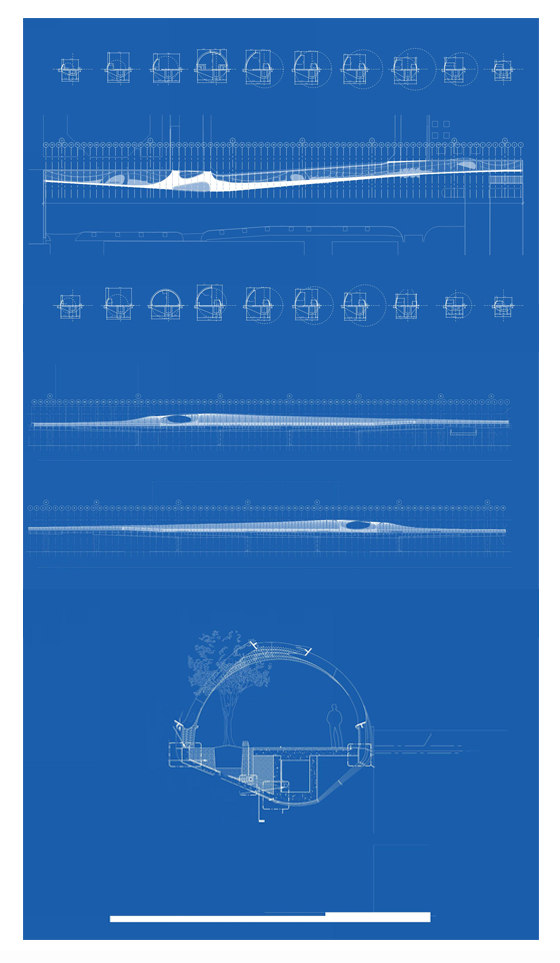Located in Long Beach, CA the Seaside Way Pedestrian Bridge was recently completed and opened to the public. Over a four year period, from RFP to the end of construction, the project underwent dramatic changes in both purpose and design. Two major venues of Long Beach, the Convention Center and Performing Arts Center, required a connection that allowed attendees to circulate freely between the two locations. As it was, event attendees would have to navigate numerous flights of stairs and battle a stretch of Seaside Way which is largely characterized by loading docks and HVAC equipment.
The initial solution was to build an elevated sidewalk, however, after a strong response to the RFQ issued by the city, the potential for a more complete public amenity was realized. Founder and design principal of SPF:a, Zoltan E. Pali, FAIA, along with the City’s Public Works Project Manager, Eric Lopez and the CEO of the Long Beach Convention Center, Steve Goodling, were the catalysts who took the project further.
The completed product yields a new 600 foot pedestrian bridge consisting of 76 welded bent steel “T” ribs framing the top, and approximately only 1200 cubic yards of poured in place concrete continuing the shape on the bottom, making it a very efficient and light structure. The bridge canopy has a total of 3,500 color changing LED node lights. The design team worked closely with the light manufacturer to create a custom, three-piece, stainless steel node clip that provides fastening to the stainless steel cables, the passage of the LED node wiring, and ease of installation / replacement flexibility.
The overall design is heavily influenced by imagery that characterizes Long Beach. Elemental structural concepts such as the ribcage or a hull of a ship are married with the elegance and uniformity found in waves. The attachment of lights to cables was done in a way that conveys a net-like feeling or the rigging of a ship. The graceful lighting system, along with significant greenery along the bridge, is made possible through the effort that went into concealing all power and drainage within the concrete spine beam of the bridge.
Arriving at the final shape was a result of budget constraints and coordination with the development of the lot adjacent to the bridge. SPF:a brought the overall cost of the project down by simplifying the steel geometry and through modifying the concrete profile of the bridge. Prior to construction, the design called for 80 or more uniquely formed concrete rib beams, however, the design team was able to optimize the geometry to allow for one concrete shape which could be repeated throughout the entire bridge.
Although this move altered the complex curvature of each steel rib segment, the repetitive nature still worked with the design aspirations to resemble a spine. An additional factor which influenced the final shape was the anticipated development adjacent to the bridge. The team worked closely with private developers to achieve a mutually beneficial deck footprint.
As Seaside Way serves as a segment of the Long Beach Grand Prix race circuit, construction was successfully coordinated with the race schedule. The opening ceremony was held just before the New Year and the project has already received the Honor Award from the American Council of Engineering Companies of California for Engineering Excellence. The Rainbow Bridge provides visitors with a unique experience that reflects the aura of Long Beach.
SPF:architects
